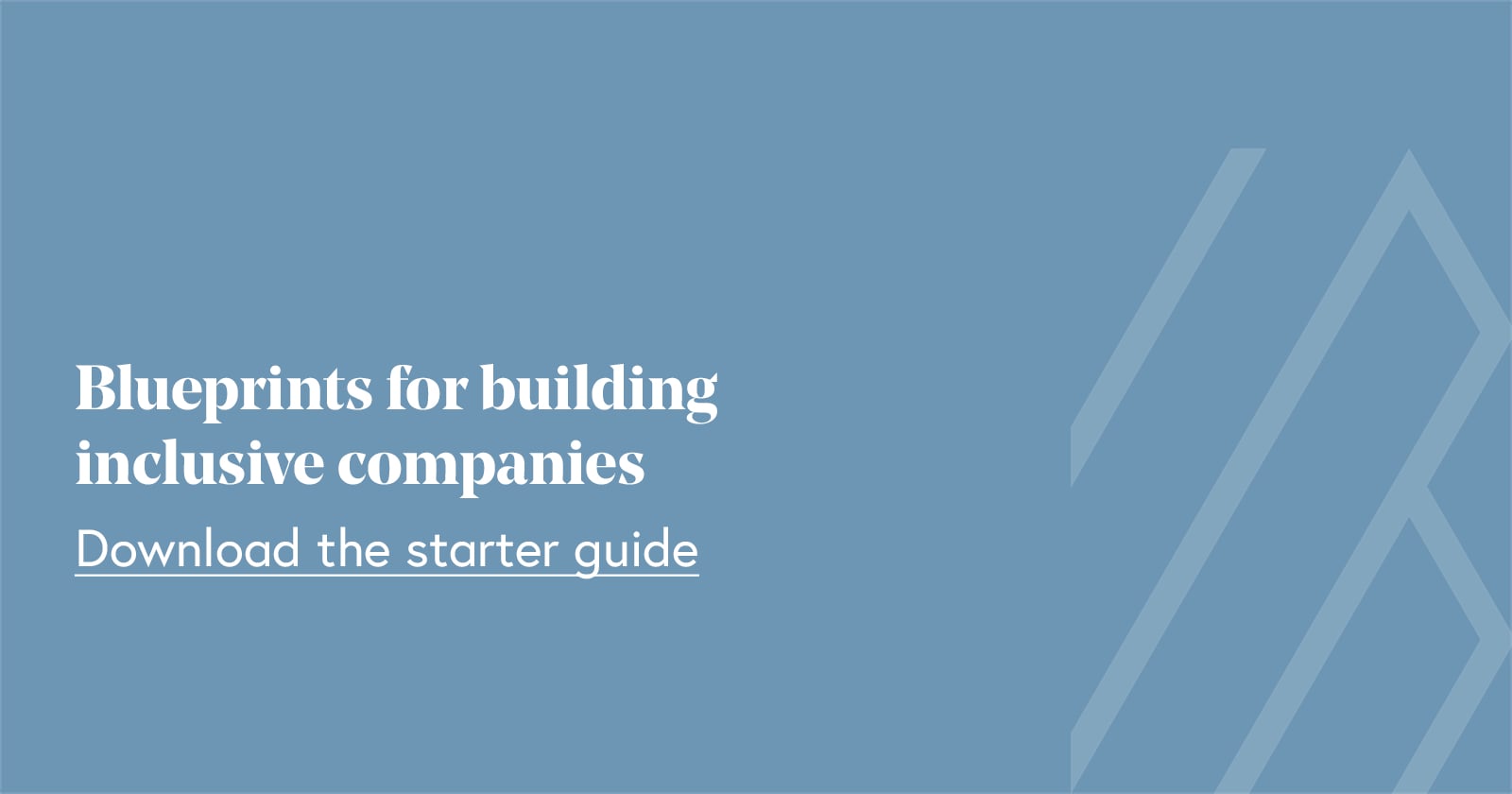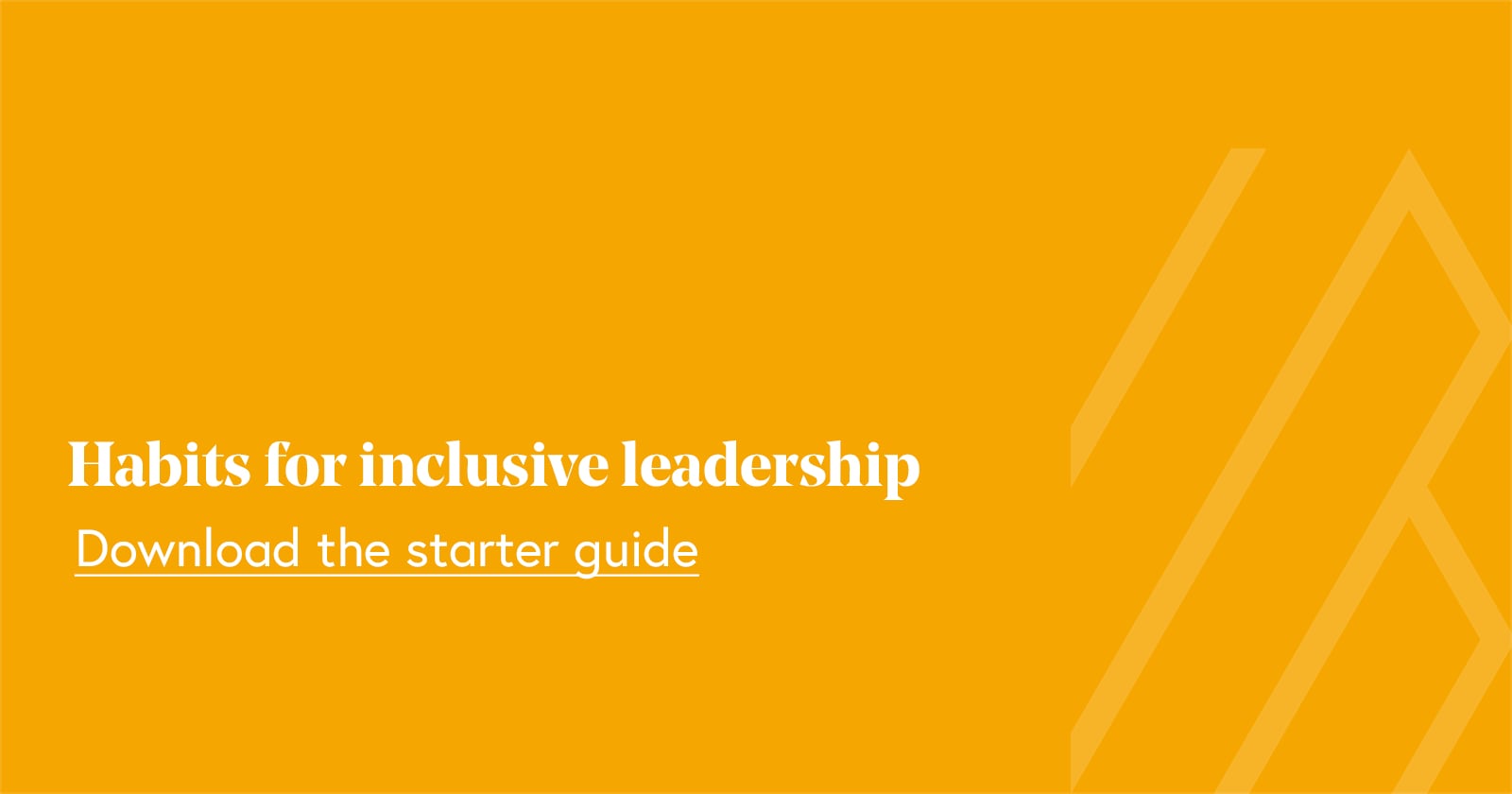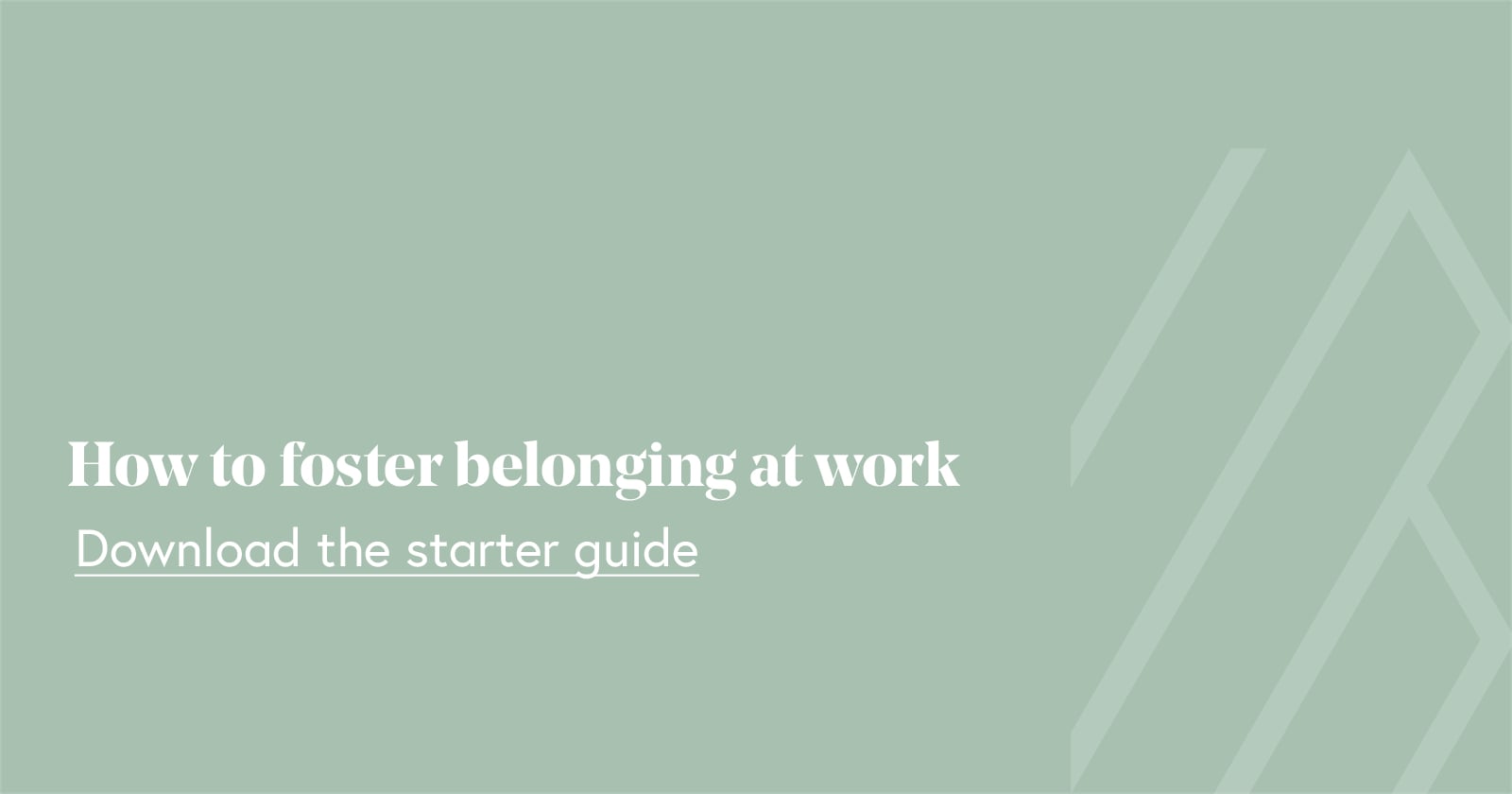Procore’s Valerie Jackson shares the blueprints for building inclusive companies
Here's the starter guide that'll break new ground when leading a culture change at work.
https://bvp.box.com/v/inclusion-starter-guide
“When it comes to building a workplace people love, building diverse teams is just the tip of the iceberg,” says Valerie Jackson, an early architect in inclusion, diversity, and belonging for companies. A practicing lawyer in 2007, Valerie became the Head of Diversity of a firm to set them apart in the talent market. This was before companies explored the positive impact belonging had on employee productivity and retention, or even how diverse product teams improve user experiences.
Now as Procore’s global inclusion and diversity leader, Valerie joined the ranks to serve every office around the globe and continue the company’s deep tradition of fostering one of the best places to work. It starts with understanding the bedrock of workplace culture and creating an environment where team members are open to coaching and learning new skills.
“The cognitive and emotional cultures at work not only influence what people say and do but also the conclusions we draw from data and the systems that ultimately scale.”
While there is no one-size-fits-all approach to designing a comprehensive diversity and inclusion strategy, there are research-backed methods that improve rates of inclusion among teams and drive overall systemic change.
In this exclusive interview—and her starter guide for culture leaders—Valerie Jackson explains how cognitive and emotional culture encourages company norms and the practices that build inclusive teams, and then offers a blueprint for building a diversity and inclusion strategy.
Understanding the bedrock of workplace culture
There are two fundamental aspects that makeup company culture: Cognitive culture is the shared intellectual values, norms, artifacts, and assumptions that serve as a guide for the group to thrive. Whereas, emotional culture is comprised of the signals and behaviors people consciously practice that influence employee satisfaction, burnout, team dynamics, and even financial performance and absenteeism. The controllable results we see at work are downstream of what teams think, say, and do.
“Habitualized modes of thinking and unconscious behaviors have major consequences on company culture,” Valerie explains. “When teams are not mindful of their cognitive and emotional culture, customers and stakeholders are short-changed out of innovation and long-term productivity gains. While companies are solving critical problems with complex technology, many teams still have a culture of groupthink because they unwittingly rely on the fastest yet crudest system of thinking when making decisions.”
Inspired by the book Thinking, Fast and Slow, by author Daniel Kahneman, Valerie coaches Procore teams on the two types of systems thinking and the benefits and drawbacks of each.
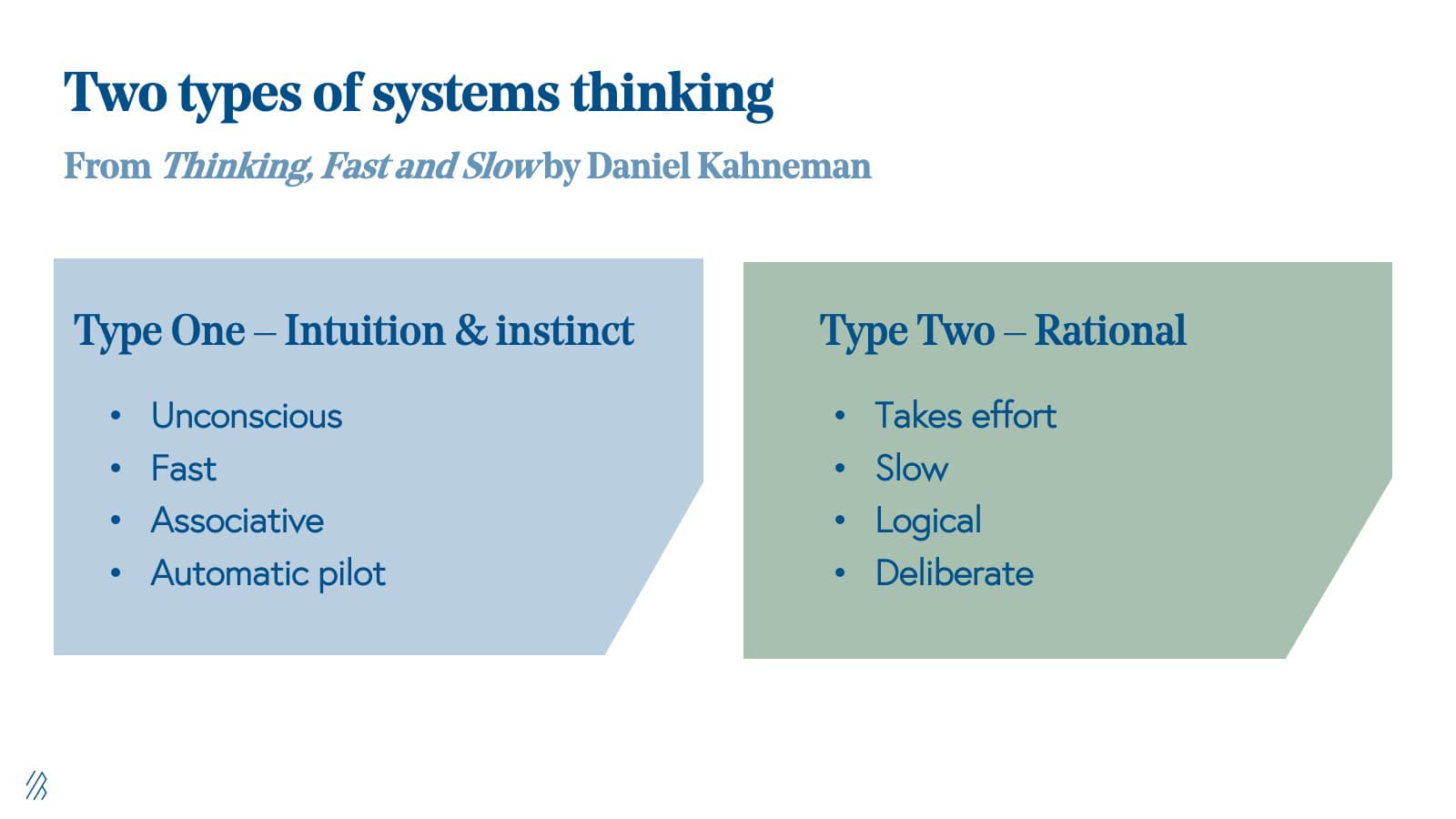
“The automatic nature of Type One Thinking drives pattern matching, which escalates the pace of decision making. However, it also potentially leads to uninspired groupthink,” Valerie says. “Groupthink isn’t just a bad habit; when practiced, it can lead to shipping products that have mistakes.
“For example, when YouTube launched its iOS app in 2012 approximately 10% of the videos users were uploading were being uploaded incorrectly; engineers hadn’t accounted for left-handed users and how they rotate phones. If a team serves diverse markets, they’ve got to slow down enough to activate Type Two Thinking.” To do just that, Valerie recommends three simple practices to become more mindful at work.
Shifting from Type One to Type Two Thinking
Check for vulnerabilities: “Before even exploring options and discussing with a group, diagnose how a group could be vulnerable to bias,” Valerie says. Unconscious bias crops up most commonly in four situations:
- When a team encounters new circumstances;
- When a situation requires discretion;
- When a group is working with ambiguous parameters or data;
- When decision-makers are stressed in any way.
HALT: Hungry, Angry, Lonely, or Tired is a common acronym Valerie uses to help raise someone’s self-awareness and suss out stress triggers. “Stress, overwhelm, and multi-tasking are deleterious to your brain. In these circumstances, pause and take a breath—even if you feel pressure to rush. I advise all leaders to examine what drives their stress and how they can reduce or mitigate it before taking further action.”
Compare and contrast scenarios or sets of information: “For example, when evaluating a resume, it’s easy to slip into Type One because of associative bias we all have with titles, schools, and brands, etc. However, if I were to take the resume of another applicant and compare and contrast the two resumes side-by-side, my brain would naturally slow down and trigger Type Two’s deliberate processing. It might only take three extra minutes versus 30 seconds, but this small practice leads to a more thoughtful assessment as opposed to a gut-driven reaction.”
Coaching inclusive teams and leaders
Procore adopted Catalyst’s EACH framework, which outlines the key inclusive leadership values of empowerment, accountability, courage, and humility. These values are then translated into behaviors and habits that are designed to inform management training and how leaders will be assessed.
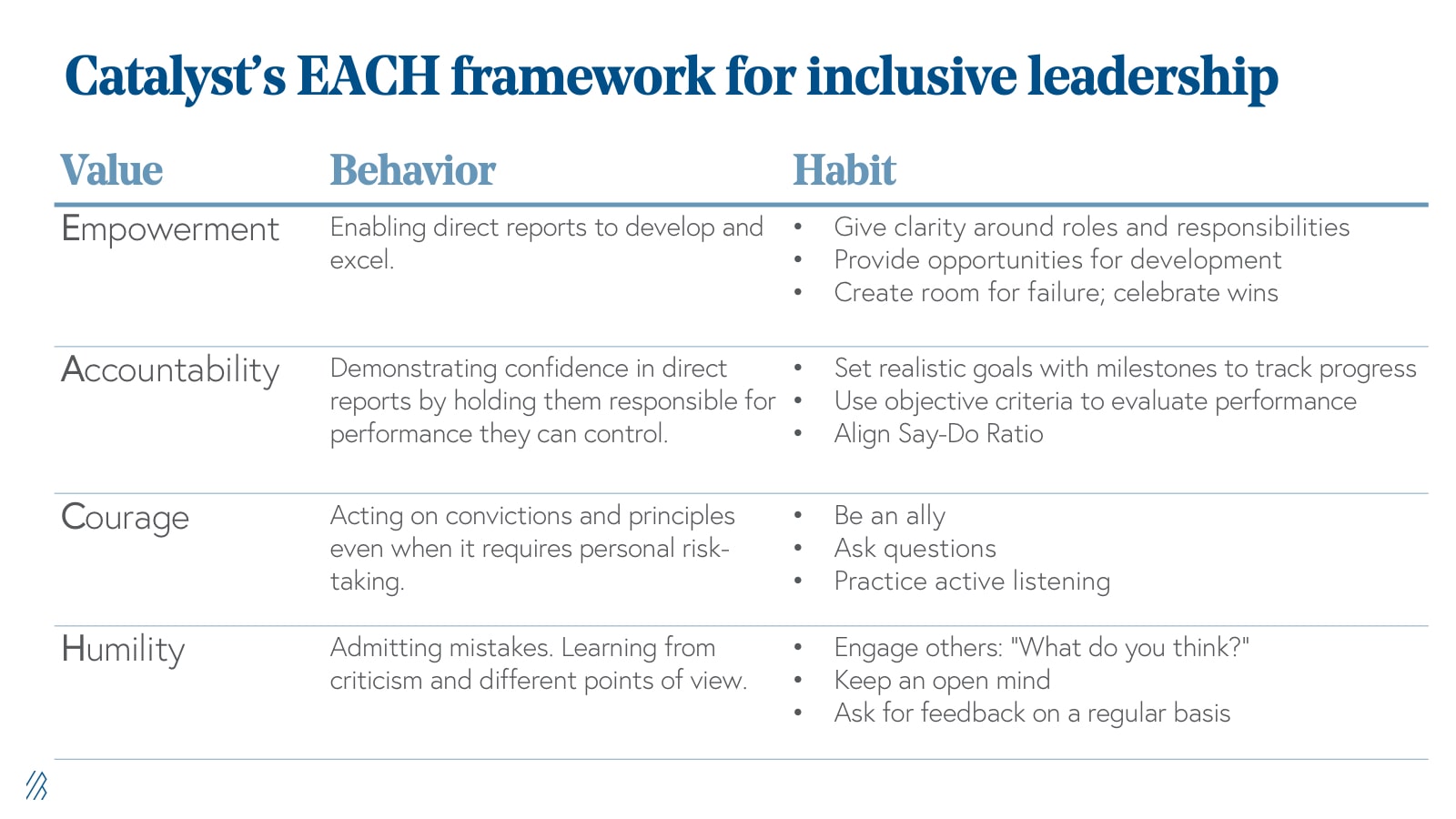
For example, to help empower direct reports, a manager provides clear expectations on a team member’s role and responsibilities. When a direct report faces a challenging project, an inclusive manager will provide parameters, such as check-ins at crucial milestones and guardrails for failure, so the direct report has room to make mistakes and learn. And of course, an empowering boss must never underestimate the impact of positive reinforcement, whether that’s a kudos given on the team Slack channel or some other acknowledgment where a manager expresses the positive impact they’re having on the team.
Inclusive habits for early-stage founders
Many early stage founders might fall back on the excuse that their company is too small to focus on inclusive management training. However, the EACH framework is built to focus on the individual versus the organization.
“Being an inclusive leader starts with your behavior. You’ve got to have a balanced Say-Do Ratio, which means you hold yourself accountable and follow through on your values and commitments,” Valerie says.
“The courageous act of vulnerability not only builds bonds but is a fast track toward embodying these values. For example, when you don’t know the answer to a question or problem, don’t be afraid to engage others. Asking, ‘What do you think?’ is a small but mighty way to build trust and get buy-in from others.”
The EACH framework tailored for founders:
- Empower your team by agreeing to dissent.
- Drive accountability by being transparent with goals and deliverables.
- Have the courage to hire—and listen to—people who think differently.
- Grow your humility by asking, “What do you think?” more often.
Practicing the skills of the Chief Listening Officer, as PagerDuty’s CEO Jenn Tejada shared with Bessemer, are a few tactical steps that could bolster each value. These steps include grabbing coffee individually with all your team members, getting feedback in alternative ways during brainstorms, and regularly sharing what you’ve learned to the broader team or company.
“Research shows that inclusive team leaders can positively impact an individual’s feelings of inclusion by up to 70%, and particularly improve performance in terms of quality and collaboration,” says Valerie.
Fostering belonging at work
“Qualitative researchers at Deloitte have found six elements of an inclusive culture. These elements are fairness and respect, which reference how we wish to be treated and how we treat others; value and belonging, which reference how we feel; and psychological safety and inspiration, which connect to whether we engage or how we engage.”
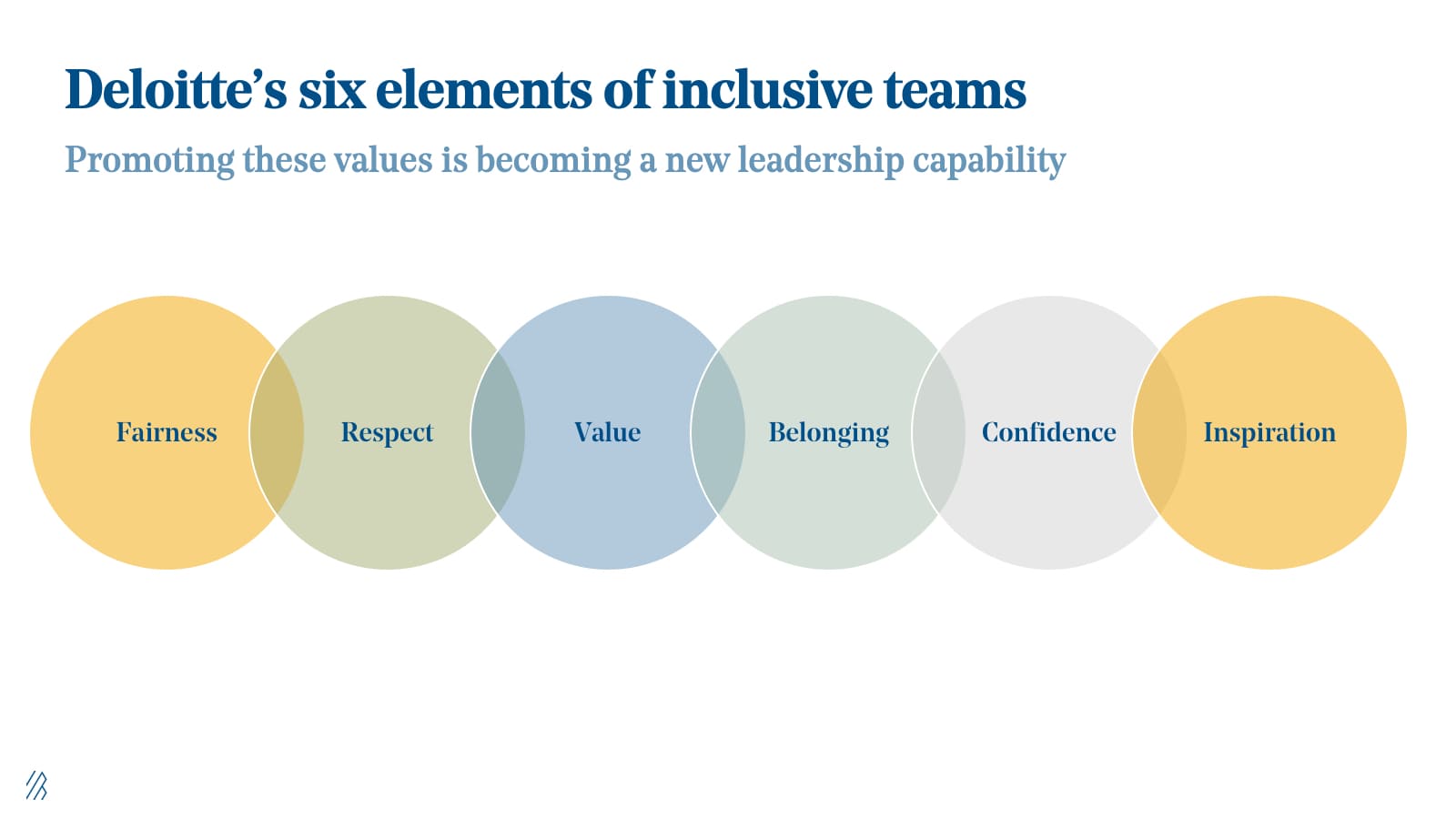
“At Procore, we promote using team workshops and offsites as opportunities to build psychological safety among team members, based on the research from Amy Edmondson and Gallup,” Valerie says. In her starter guide, Valerie breaks down how to run a team workshop to foster a sense of belonging among team members.
While inclusivity workshops are educational, there are simpler tactics managers can practice to increase belonging. “Especially in brainstorms, assigning people roles is a powerful practice. When you assign someone a role, such as a devil’s advocate, it gives the group permission to address difficult topics that could be brushed under the rug.
“Psychological safety, the most fragile element to an inclusive team, isn’t a measure of whether someone wants to speak their mind or contribute to the group, but whether they feel they can contribute,” she explains. “Our job as inclusive leaders is to embody the values we uphold and create an environment so everyone feels they belong and can do their best work.”
Constructing a comprehensive inclusion strategy
“Initiating culture change is about reworking an organization’s systems and individual attitudes and behaviors to create the desired environment,” Valerie says.
“After doing an audit via surveys and meetings with teams and stakeholders, I map out needs and how we’re going to build that new environment together,” Valerie says.
“Similar to an org chart, initiating change goes from broad to detailed, and must focus on both people and systems to drive new behaviors. If there is a delta between the current state and desired state, I help to design new programs or tweak old ones. Then, I conduct trainings and workshops so people can develop new behaviors and attitudes.”
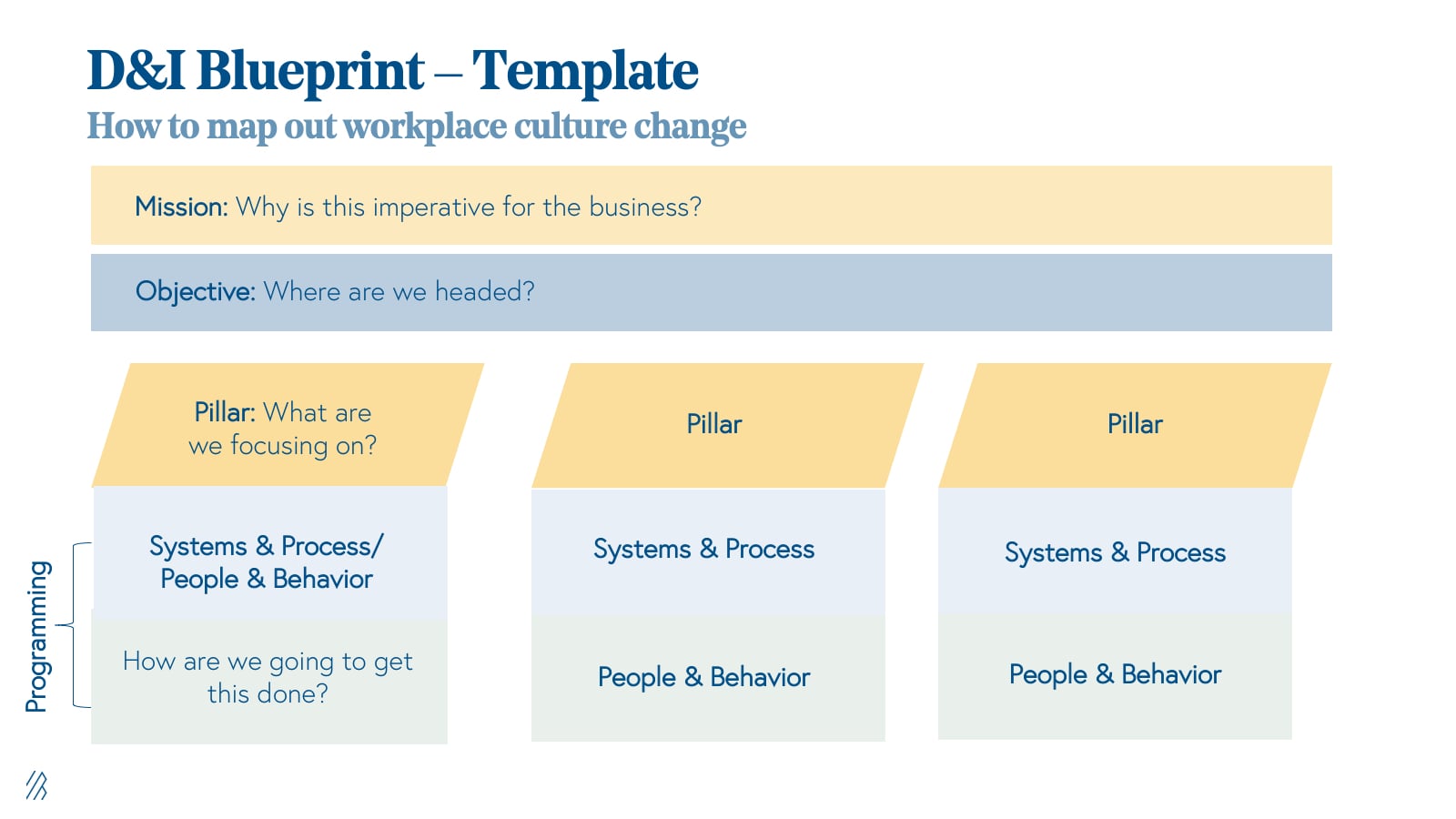
Devising a diversity and inclusion strategy starts by answering four essential questions:
- Why are we doing this? The mission should explain why this culture change is imperative for the business.
- Where are we headed? The objective explains directionally where the organization is headed. Goals are measured through qualitative and quantitative measures.
- What are we focused on? The pillars are the challenges and areas of opportunity where a culture leader can make an impact on the business. While the mission and objective might stay consistent year-over-year, an organization may change the pillars annually or increase the number over time.
- How are we going to get this done? Underneath each pillar are programs that drive change in terms of group systems and individual attitudes and behaviors. To measure programmatic change, match a KPI to each program, system matches a KPI to each program, system, or habit and see how it improves quarter-over-quarter.
As an example, Valerie shares some of the strategic framework she is building for Procore:
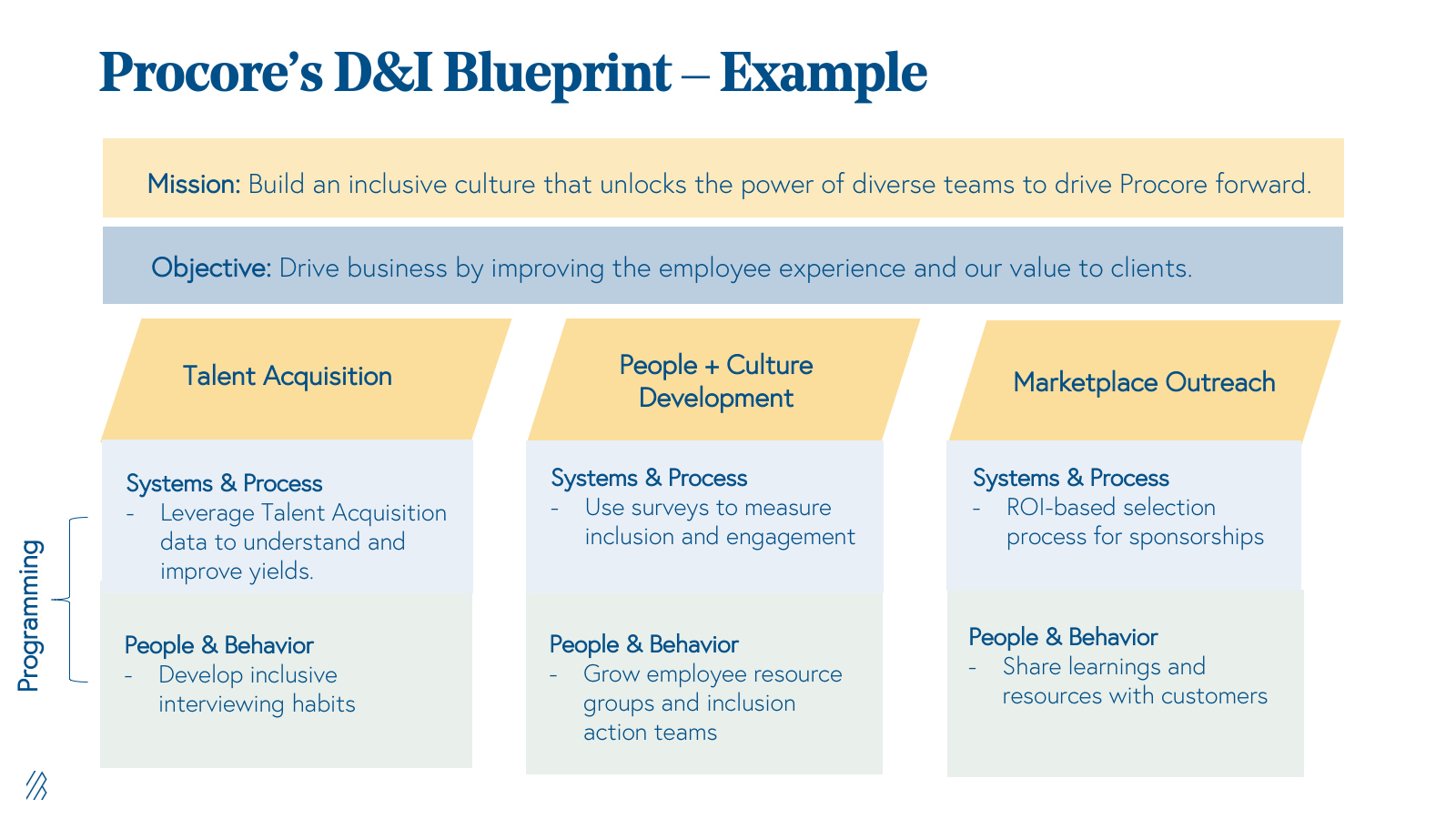
These are only a few examples of the many possible focus areas. The key is to create processes that drive desired behaviors that are in alignment with the company’s values.
“While leadership sets the tone at the top, everyone has a shared responsibility for the culture they create. What people say and do, and even the small things they unconsciously signal, create a ripple effect,” says Valerie.
“At Procore, this is why we call it Inclusion and Diversity versus the other way around. Inclusion is the foundation of culture change, and teams will start seeing positive changes when equitable systems meet collective action.”


